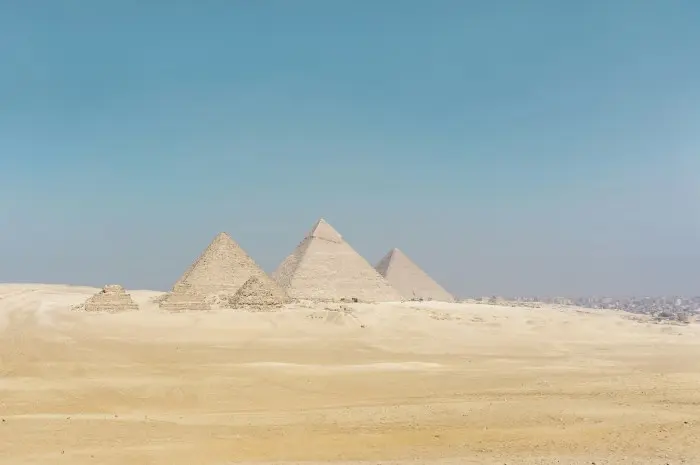
Explore 12 must-visit historical sites around the world and uncover the rich stories and cultural heritage behind these iconic landmarks.
Traveling to historical sites can be a profound and enlightening experience, offering a glimpse into the past civilizations and cultures that have shaped our world today.
From ancient ruins to medieval castles, each site tells a unique story.
Here are 12 must-visit historical sites around the world that offer not only a window into a rich past but also breathtaking views and remarkable architecture.
1. The Great Pyramid of Giza, Egypt
The last surviving wonder of the ancient world, the Great Pyramid of Giza, was constructed over 4,500 years ago as a tomb for the Pharaoh Khufu.
This architectural marvel stands as a testament to the ancient Egyptians’ ingenuity and engineering skills.
2. Machu Picchu, Peru
Perched high in the Andes mountains, Machu Picchu is an ancient Incan city known for its sophisticated dry-stone walls that fuse huge blocks without the use of mortar.
Its exact former use remains a mystery, which only adds to the allure of this breathtaking site.
3. The Colosseum, Italy
An iconic symbol of Imperial Rome, the Colosseum is an enormous amphitheater that hosted gladiatorial contests and public spectacles.
Its complex and advanced architecture allowed it to hold tens of thousands of spectators, showcasing the ingenuity of Roman engineering.
4. Petra, Jordan
Known as the ‘Rose City’ for the color of the stone out of which it is carved, Petra is an archaeological site that was once a thriving trading center and the capital of the Nabataean empire between 400 B.C. and A.D. 106.
The site is famous for its rock-cut architecture and water conduit system.
5. The Great Wall of China, China
Stretching over 13,000 miles, the Great Wall of China was built to protect the Chinese states and empires against the raids and invasions of the various nomadic groups from the Eurasian Steppe.
This massive wall is not a continuous line but a series of sections built by various dynasties to defend their territories.
6. Stonehenge, United Kingdom
Stonehenge is a prehistoric monument in Wiltshire, England, consisting of a ring of standing stones, each around 13 feet high, seven feet wide, and weighing approximately 25 tons.
Its purpose remains one of the most enduring mysteries of the world.
7. Chichen Itza, Mexico
This large pre-Columbian city built by the Maya people is famous for the El Castillo pyramid that dominates the site.
Chichen Itza is a testament to the genius of the Maya civilization and offers insights into the Mayan culture and their astronomical skills.
8. The Acropolis, Greece
Situated on a rocky outcrop above Athens, the Acropolis is a citadel containing the remains of several ancient buildings of great architectural and historic significance, the most famous being the Parthenon.
The site symbolizes the glory of ancient Greece and the birth of democracy.
9. Taj Mahal, India
The Taj Mahal, located in Agra, India, is a white marble mausoleum built by Mughal emperor Shah Jahan to honor his wife Mumtaz Mahal.
As a UNESCO World Heritage site, it is celebrated for its exquisite architecture and magnificent gardens.
10. Angkor Wat, Cambodia
Angkor Wat, the largest religious monument globally, is an iconic symbol of Cambodia.
Initially built as a Hindu temple for the god Vishnu, it was later converted into a Buddhist temple over time.
The complex is admired for the grandeur and harmony of the architecture.
11. Mont Saint-Michel, France
Mont Saint-Michel is a small rocky island in Normandy, France, home to a stunning medieval monastery.
Surrounded by a massive wall and fortifications, it was one of the most significant pilgrimage sites during the Middle Ages.
12. Easter Island, Chile
Famous for its nearly 1,000 extant monumental statues, called moai, created by the early Rapa Nui people, Easter Island is one of the most remote inhabited islands in the world.
The moai are sculpted human figures with large heads, typically placed on enormous stone platforms known as ahus.
Conclusion
These historical sites are not only monuments to human ingenuity and creativity but are also deeply infused with the spirit of the cultures and people who built them.
Visiting these sites offers a profound perspective on the past and a deeper appreciation for the diverse cultures that shape our global heritage.


